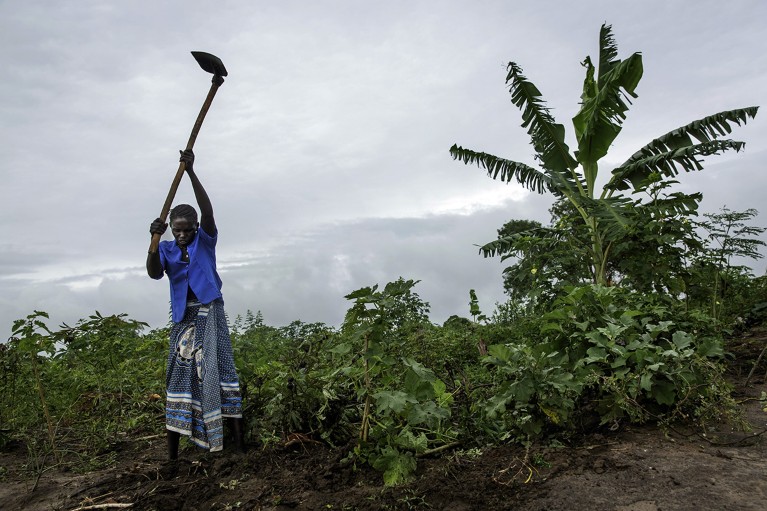
Farmer Angelina Monday works on her plot of land in Uganda, where she grows beans and vegetables for her family. Credit: Mads Nissen/Politiken/Panos Pictures
I grew up in Campinas, a city in southeast Brazil. The apples there, cultivated from European varieties since the 1960s, tasted sweet. But, given the choice, I would always pick papayas grown in our garden. My father, who knew that growing a temperate fruit tree in a tropical country seldom worked, instead filled our garden with tropical ones, including two varieties of papaya. Meanwhile, drawing on knowledge from her Indigenous roots, my mother grew all sorts of herbs in pots around the house, which she used to treat ailments such as diarrhoea and indigestion.
Indigenous peoples and other local communities, who might have lived in a region for thousands or hundreds of years, respectively, have long acted as foragers, growers and shapers of nature1. In many parts of the world, the food production systems developed by such communities — from irrigated crops to agroforestry systems — have been the dominant food systems supporting regional economies, and feeding rural and urban areas alike2.
For the past three decades, various efforts involving academic and industrial partners have explored how biodiversity in low- and middle-income countries could be exploited commercially — bioprospected — for new pharmaceuticals and crop varieties, and how benefits could be shared equitably. Yet there are huge power imbalances between the wealthy countries and large corporations seeking the products, and the biodiversity-rich but economically and technologically deprived countries and communities providing them. In practice, the benefits rarely reach the people who are the knowledge holders and guardians of biodiversity and agrobiodiversity3.
…click on the above link to read the rest…